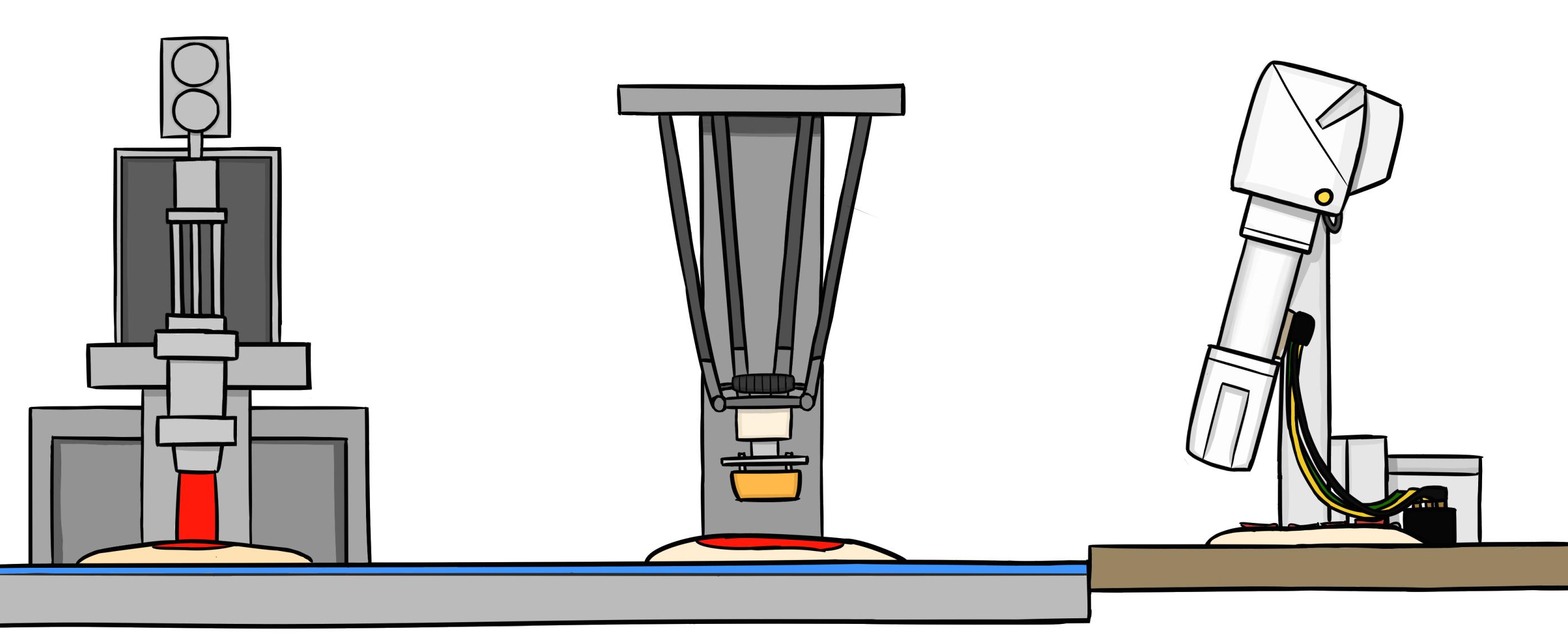What a human can do, a robot can do better.
This belief seems to have gained traction in Silicon Valley. Robots can be found driving cars, cleaning floors, and even performing surgeries. But how often have you seen one bake your pizza or toss your salad?
Entrepreneurs are setting their sights on food service as the next frontier for technology, but the jury is out on whether automated food is the new standard or a lame gimmick.. We sought the most innovative combinations of food and tech so far to decide if they are worth the hype.
Sally the Robot at Calafia Market-a-Go-Go
Inside Calafia Market-a-Go-Go is Sally, a robot designed to make salads with a few taps of a touchscreen. Select the “Cardinal Crush,” the “Sally Paly,” or build your own salad from scratch.
Deepak Sekar is the C EO 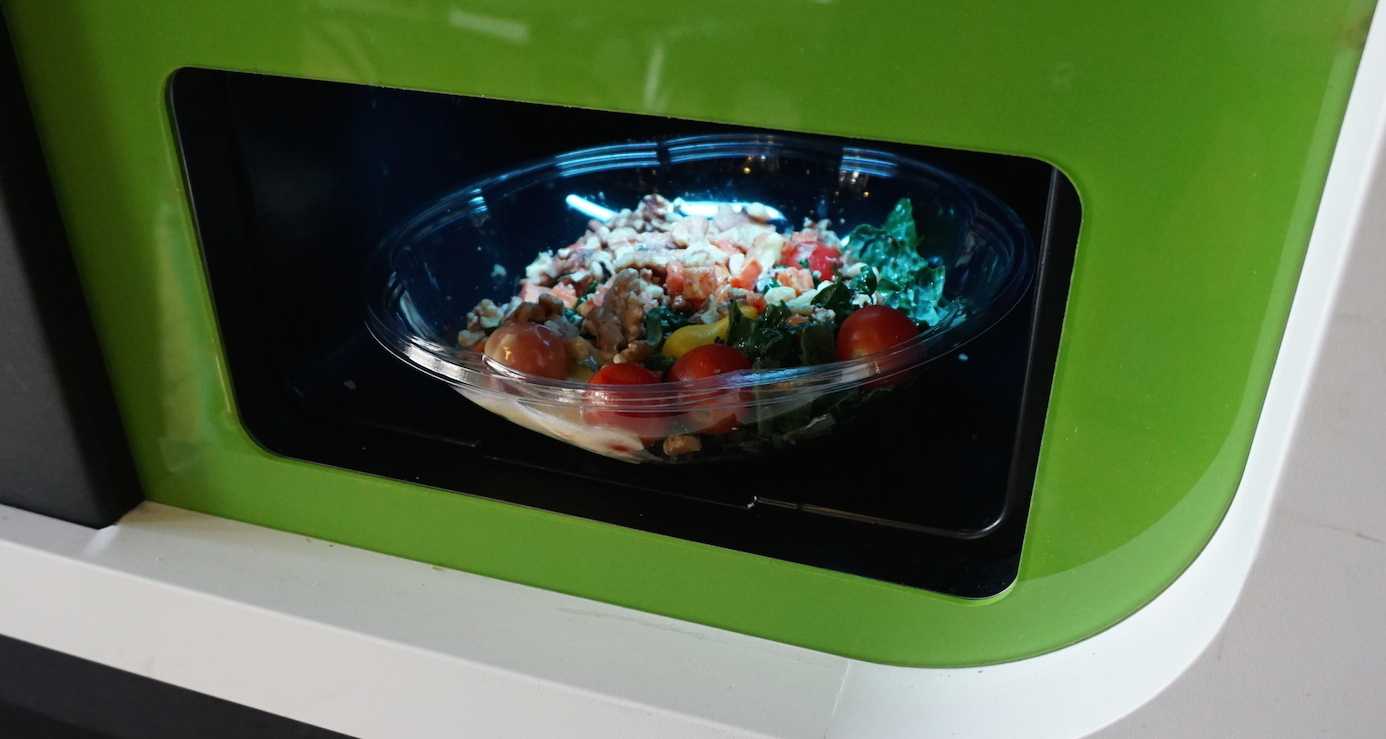 and founder of Chowbotics, the company that created Sally. He says salad-making robots like Sally are convenient because they are available 24/7. Chowbotics decided to start with a robot that makes salad because it’s the simplest type of food you can make, according to Sekar.
and founder of Chowbotics, the company that created Sally. He says salad-making robots like Sally are convenient because they are available 24/7. Chowbotics decided to start with a robot that makes salad because it’s the simplest type of food you can make, according to Sekar.
“The way you handle engineering is you do simple things and you make it more and more sophisticated,” Sekar says. “So our future products will do other types of food as well.”
Regarding concerns about robots taking away jobs, Sekar says the nature of people’s work has changed throughout history.
“40 years back, a lot of guys were doing semiconductors — now they’re all doing software,” Sekar says. “The nature of people’s work will change, and in restaurant business as well I believe the nature of their work is going to change.”
Kula Revolving Sushi Bar
Bzzz. You barely have time to look up before a plate of California Rolls whizzes by your face and stops at the next table, shifting precariously from the momentum. Craving a bite yourself, you tap the tablet next to your table to order a bowl of ramen. Two minutes later, it arrives on the upper level of the conveyer belt, complete with a safety-locked lid.
With over 400 locations, 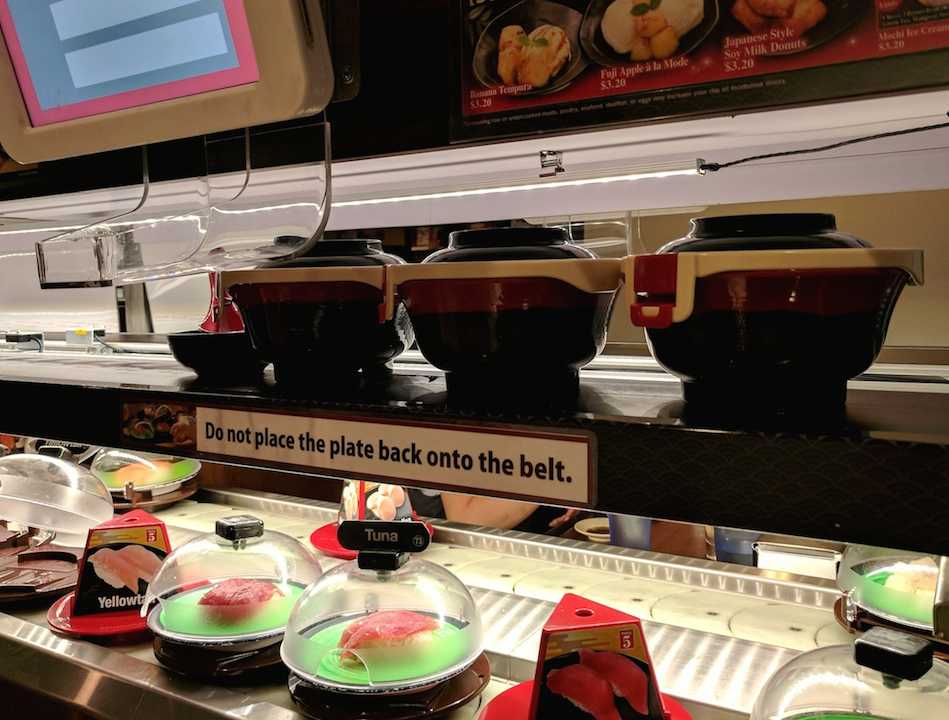 there’s a reason why Kula Revoliving Sushi Bar in Cupertino has a two-hour wait time through the weekend.
there’s a reason why Kula Revoliving Sushi Bar in Cupertino has a two-hour wait time through the weekend.
On the lower level of the conveyer belt, sushi continuously rotates past tables, covered for cleanliness but inviting all the same. Diners grab plates off the belt to enjoy, and dispose of finished ones in a slot that keeps count. For every five plates, customers are entertained by a short video. If 15 plates are inserted, a prize drops from above, like an eraser or stickers.
“It’s fun, because you have to order in the order panel,” store manager Ismael Amaya Huezo says. “Usually customers enjoy coming to Kula because they have everything at the table.”
Yayoi Teishoku Restaurant
Step into the elegant, wooden interior of Yayoi, and you’ll find packed tables, dim lighting, happy patrons — and no one taking orders.
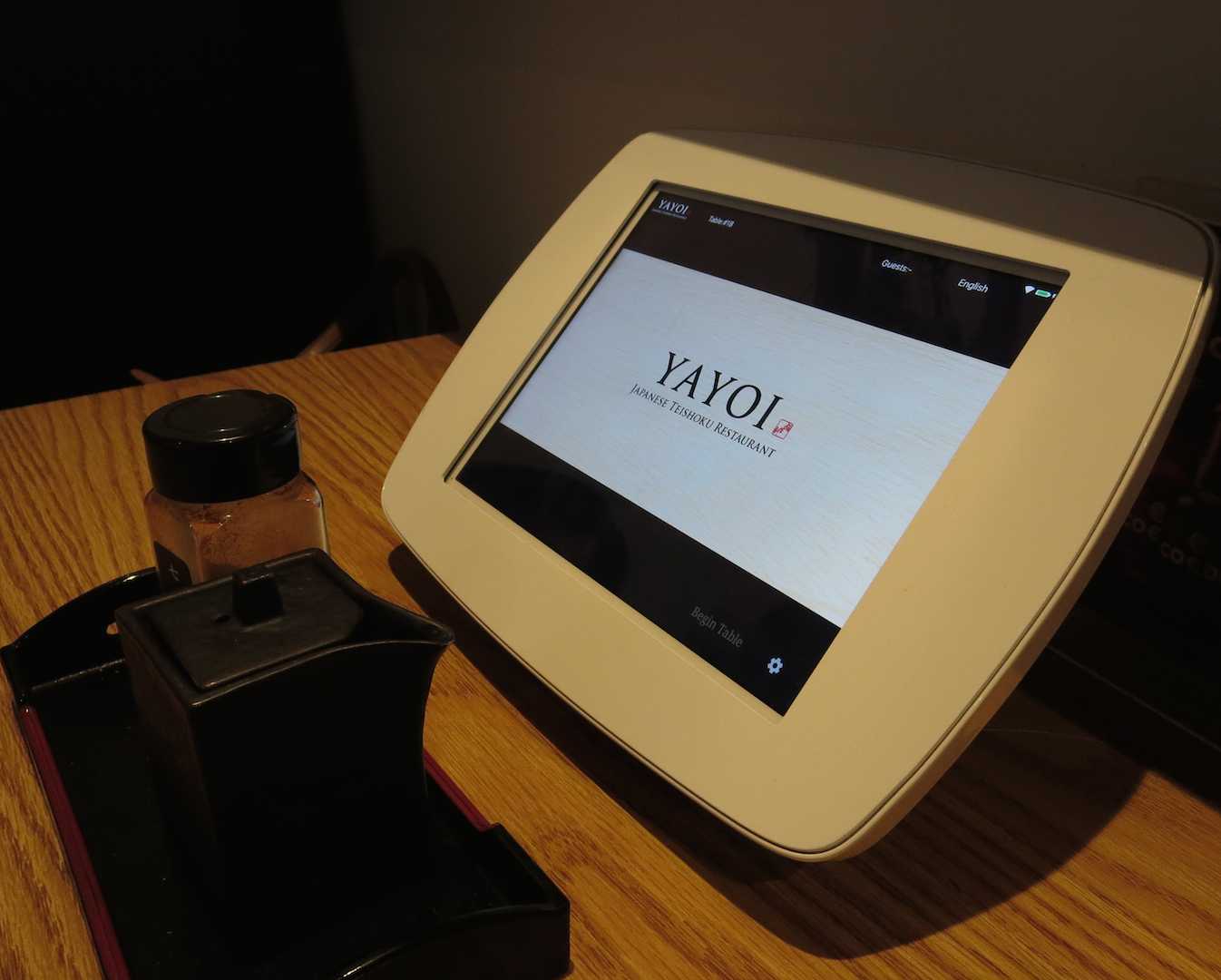 Instead, each table is outfitted with a sleek white tablet, on which customers can place orders and track the progress of each dish. Supervisor Alan Enecial says this computer network lets staff focus on what matter most: delicious, quickly served Japanese food.
Instead, each table is outfitted with a sleek white tablet, on which customers can place orders and track the progress of each dish. Supervisor Alan Enecial says this computer network lets staff focus on what matter most: delicious, quickly served Japanese food.
We felt more like we were shopping on Amazon than dining out, scrolling through various entrees and addingthem to the cart, but the lightning-fast service assuaged our doubts. We only needed to look up from the screen to see waiters clearing our physical menus from the table, and received our food in less than 10 minutes. Despite its quick arrival, our dishes were no less tasty than what you would expect in a more traditional setting.
Tablets aside, Yayoi is cooking up new ways to use technology.
“We’d probably have some of the more basic items on our menu processed through a machine instead of having it just cooked [by hand],” Enecial says.
Zume Pizza
Every day, a Zume Pizza truck parks outside Palo Alto High School, surrounded by smaller Zume cars that are constantly taking off to make deliveries. Equipped with ovens and self-cleaning pizza cutters, the truck acts as Zume’s hub for the Palo Alto area — pizzas are immediately baked in the back and delivered within minutes.
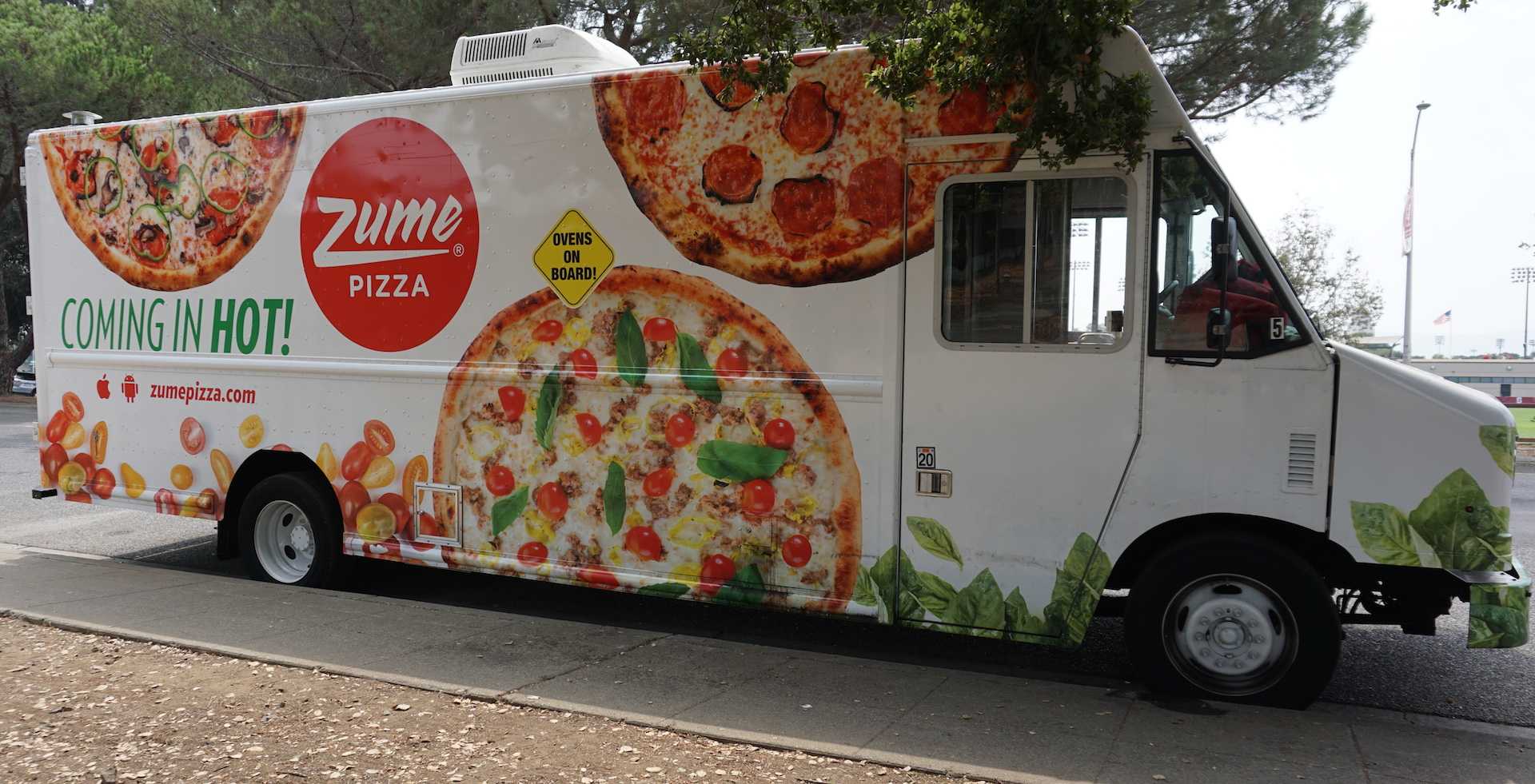 Before being loaded onto trucks, a combination of robots and humans prepare the pizzas in Zume’s Mountain View facility. The robots carry out repetitive tasks such as spreading sauce, dispensing ingredients, and moving pizzas in and out of ovens.
Before being loaded onto trucks, a combination of robots and humans prepare the pizzas in Zume’s Mountain View facility. The robots carry out repetitive tasks such as spreading sauce, dispensing ingredients, and moving pizzas in and out of ovens.
Julia Collins, co-CEO and co-founder of Zume, says the company’s mission is to ensure access to healthy and affordable meals to everyone. Collins says the use of automation in the food industry is often associated with a decrease in food quality. This is not the case at Zume.
“Zume Pizza believes that they can use automation to create not just a more efficient production line but to create a higher quality product for their customers,” Collins says.
